Happy 25th anniversary, Chandra! NASA celebrates with 25 breathtaking images from flagship X-ray observatory
When you buy through links on our articles, Future and its syndication partners may earn a commission.

It really is the summer of cosmic anniversaries.
Following the anniversary of the Apollo 11 landing and the anniversary of Space.com opening its doors to the internet, NASA's Chandra X-ray Observatory, the world's most powerful X-ray telescope, turns 25 today — and to celebrate the observatory's legacy, NASA has released 25 exquisite, never-before-seen pictures of iconic astronomical objects like the Crab Nebula, Pillars of Creation and Cassiopeia A that take us on a breathtaking journey through the universe through Chandra's eyes.
Chandra launched in 1999 — the same year Space.com started — aboard Space Shuttle Columbia. From its egg-shaped orbit high above Earth's atmosphere that takes it over one-third of the way to the moon, the observatory has led to many discoveries by recording x-ray emissions beamed from long-dead stars, supermassive black holes and clusters of galaxies.
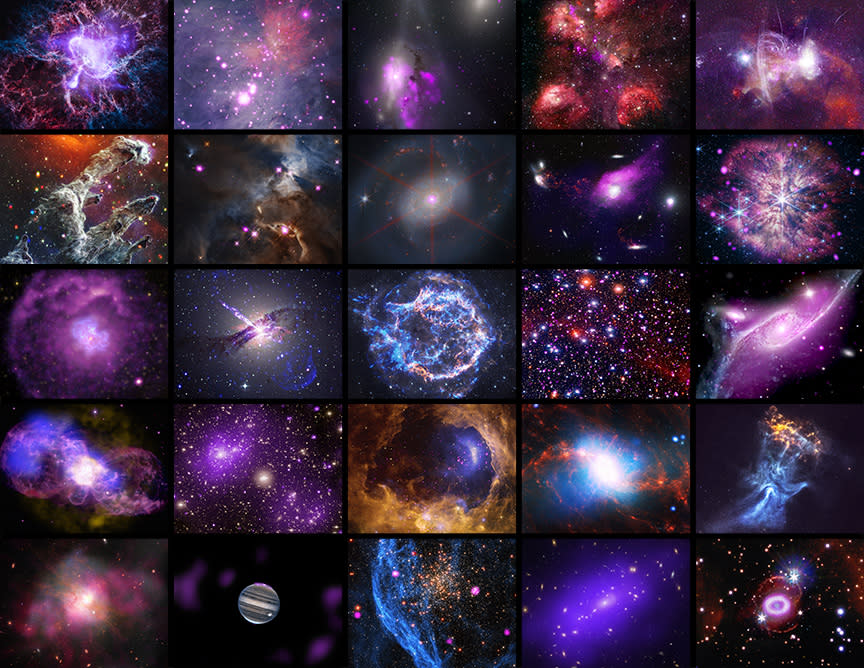
"For a quarter century, Chandra has made discovery after amazing discovery," Pat Slane, the director of the Chandra X-ray Center located at the Smithsonian Astrophysical Observatory in Massachusetts, said in a statement. "Astronomers have used Chandra to investigate mysteries that we didn't even know about when we were building the telescope — including exoplanets and dark energy."
Related: The Chandra X-ray spacecraft may soon go dark, threatening a great deal of astronomy
Chandra is the third flagship mission in NASA's Fleet of Great Observatories, following the infrared Spitzer Space Telescope, which retired in 2020, and the Hubble Space Telescope, which is still working but continues to show signs of advanced age. Astronomers around the world continue to access the observatory's data to discern the structures and evolutions of various objects in our universe. Its science has led to more than 700 Ph.D. theses, has supported thousands of undergraduate, graduate and postdoctoral research careers, and has resulted in about 10,000 peer-reviewed and pre-peer-review papers, making it one of the most scientifically productive NASA missions in astrophysics. Demand for the telescope's time has remained very high throughout the mission, with only 20 percent of requested time typically approved, according to a NASA statement.
"Chandra's imagery and data have inspired people of all ages to think about what can be found when we look up into outer space," Ellen Stofan, Under Secretary for Science and Research at the Smithsonian Institution, said in another statement. "Chandra continues to provide 'X-ray eyes' to allow us to better understand our place in the universe."
The latest images are a montage of 25,000 observations conducted by Chandra over the past quarter century, with contributions from the Hubble Space Telescope and the James Webb Space Telescope enhancing some aspects. They highlight our galaxy's dust-heavy center, a young star embedded in the Pillars of Creation, immensely hot gas near a growing supermassive black hole in the NGC 7469 spiral galaxy, and much (much) more.
The anniversary is bittersweet for many astronomers worldwide. The Chandra observatory faces a bleak future after NASA's budget plan for next five years forecasts prematurely canceling the Chandra mission due to financial restrictions despite the observatory having a decade of life left and projecting stable mission costs across coming decades. The decision would free up much of the $68 million spent on the observatory every year and lead to layoffs of astronomers whose jobs rely on its science and upkeep. The end of Chandra would also leave the U.S. — and possibly the world — without a telescope mirroring or surpassing this observatory's capabilities. Over 700 astronomers who have formed the "Save Chandra" coalition continue to urge NASA to reconsider the decision.
"Chandra is a living legacy that we hope will continue to help us explore the universe for years to come," Lisa Kewley, who is the director of the Center for Astrophysics | Harvard & Smithsonian in Massachusetts, said in a statement by the Smithsonian Institution.
Cassiopeia A
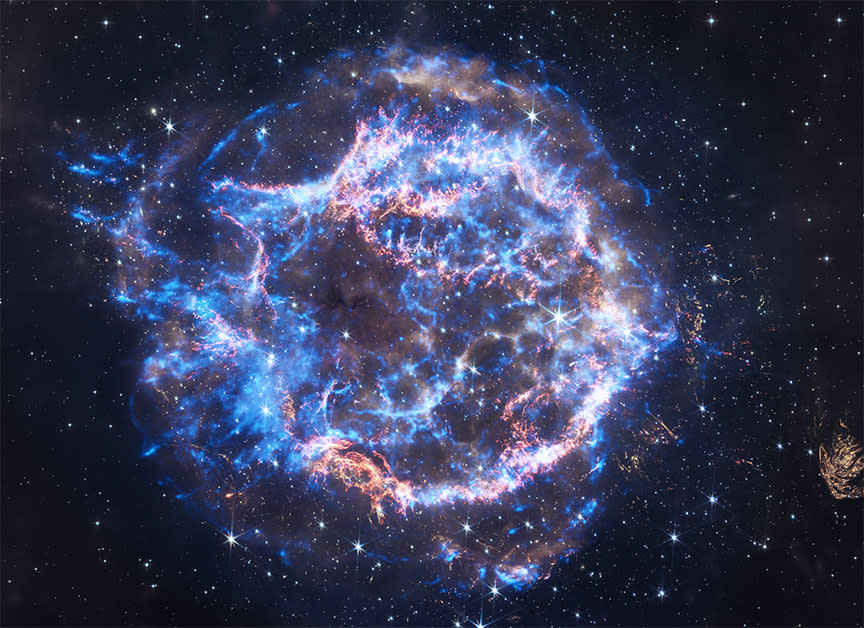
Cassiopeia A (Cass A), a supernova remnant about 11,000 light-years from Earth, was the first light image of the Chandra observatory soon after it was deployed in 1999. The observatory has since observed the glowing ball of matter and energy for more than 2 million seconds, or 23 days, since, NASA notes in a news release.
Early observations quickly revealed powerful X-rays blasting from the center of Cass A and offered astronomers their first view of the remnant, which is more specifically a compact neutron star. In subsequent years, astronomers used X-rays beaming from the debris to map the distribution of elements in the extremely dense and dead star, which showed that the original star may have turned inside out as it exploded, revealing an important step in how massive stars behave as they die.
More recently, data from the observatory was key to solving the mystery of a bizarre, grinch-like wisp of green light that was spotted snaking through Cass A.
Bat Shadow (Serpens Cloud)
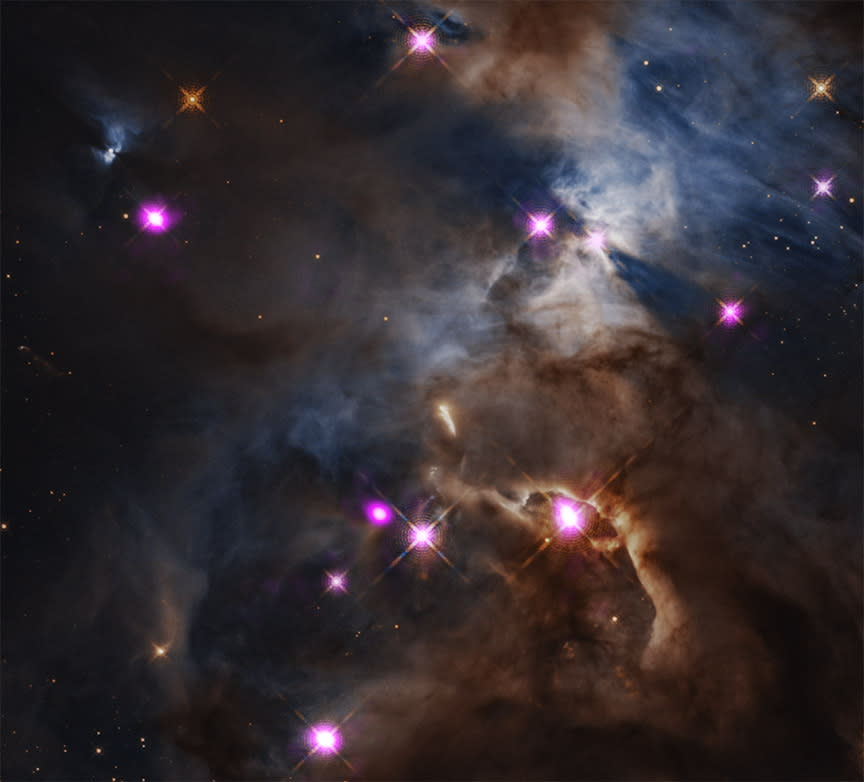
This image features the Serpens Nebula, a star-forming region roughly 1,300 light-years from Earth. A huge shadow in the shape of a bat is cast across a more distant cloud, created by a young star's puffy planet-forming disk, which is not seen in the image. The shadow is enormous — it spans 200 times the diameter of our entire solar system.
In 2020, astronomers noticed the shadow "flapping like the wings of a bird" over 400 days, thanks to what they suspected was a planet pulling on the disk and warping it.
Orion Nebula
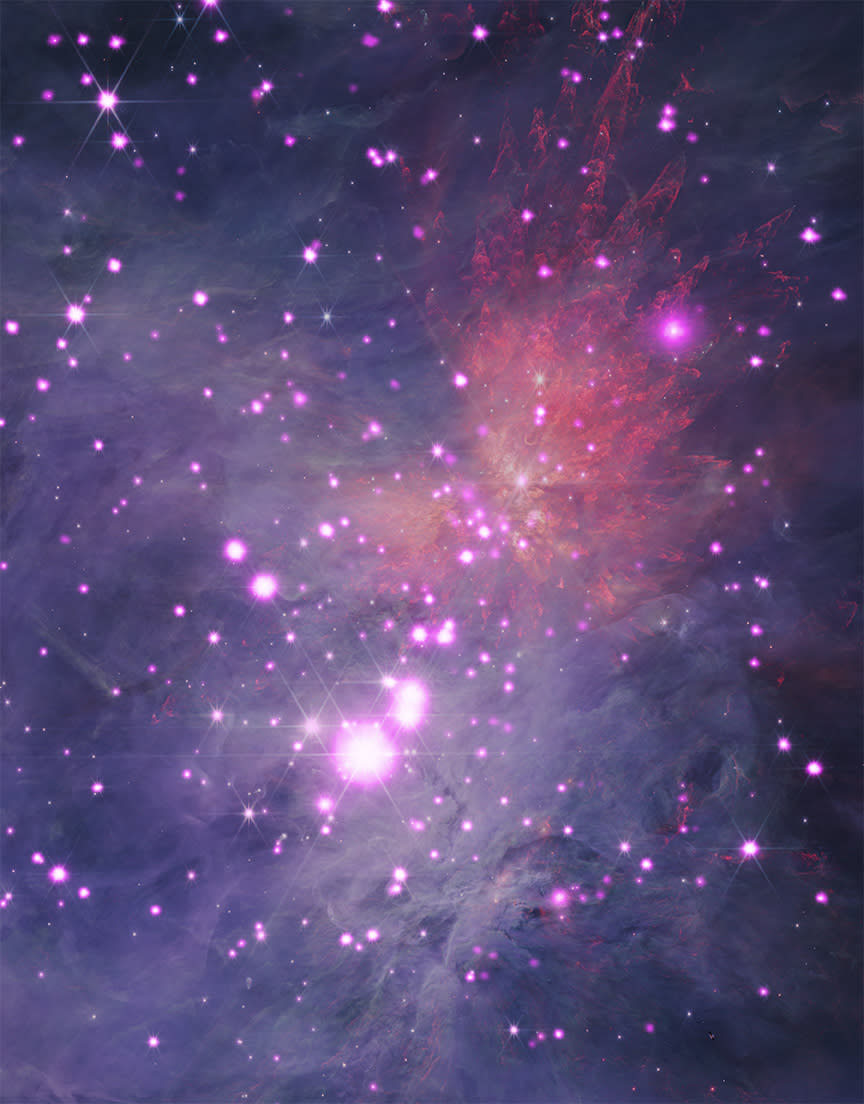
In this image, newly-formed stars are seen in neon pink with white centers shining through a haze of clouds in the Orion Nebula, which is a large cloud within our galaxy where stars are being born. At 1,500 light-years away, the nebula is one of the closest star-forming regions to Earth and is also visible to the unaided eye under dark skies.
WR 124
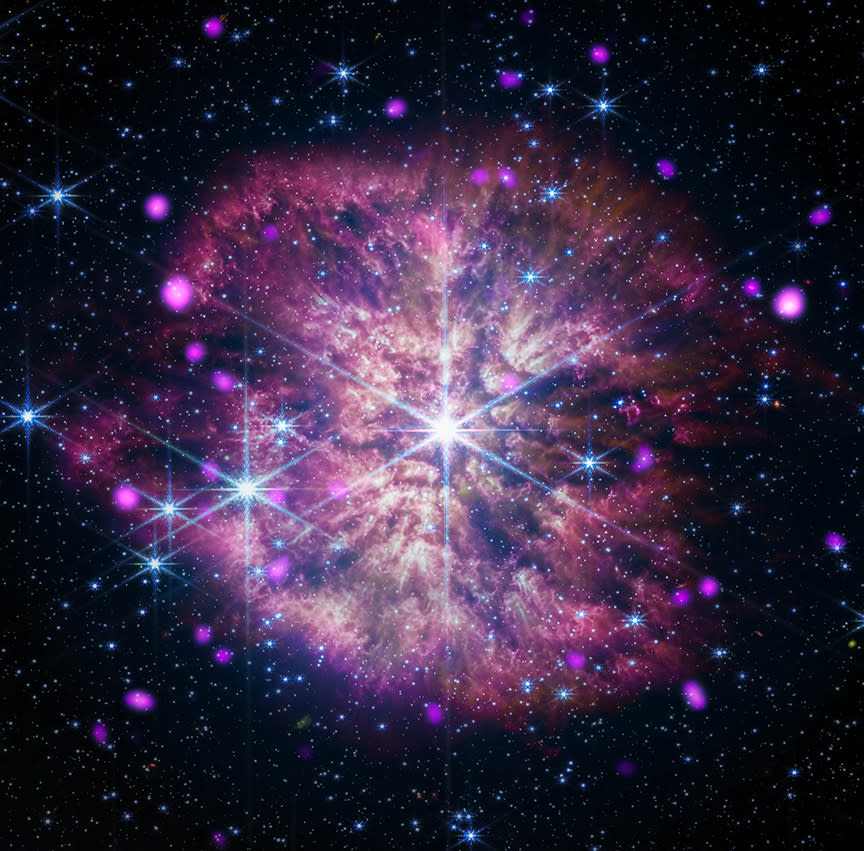
Related Stories:
— Road trip! Tour the universe with these gorgeous images from NASA's Chandra X-ray telescope
— Watch 2 gorgeous supernova remnants evolve over 20 years (timelapse video)
— NASA's Chandra X-ray telescope captures closest super star cluster to Earth (image)
WR stands for a "Wolf-Rayet" star, a rare class of massive stars that lose mass rapidly during a short-lived phase before they explode in a supernova event.
WR 124 is about 30 times heavier than the sun and lies 15,000 light-years away from Earth in the constellation Sagitta. The reds and purples in the latest image are dense wind clouds around the star, which may be preventing Chandra from spotting a companion neutron star in the region. The winds resemble the insides of a delicate flower with petals blooming, and the dozens of stars in white sprinkled around the central stars could be likened to dew on those petals.
Astronomers estimate the star has so far shed 10 suns worth of material, which is blown away from the star and cools further out in space. The debris that survives the star's death will add to the universe's dust budget and supply star and planet-forming material to the next generations of cosmic neighborhoods.
Crab Nebula
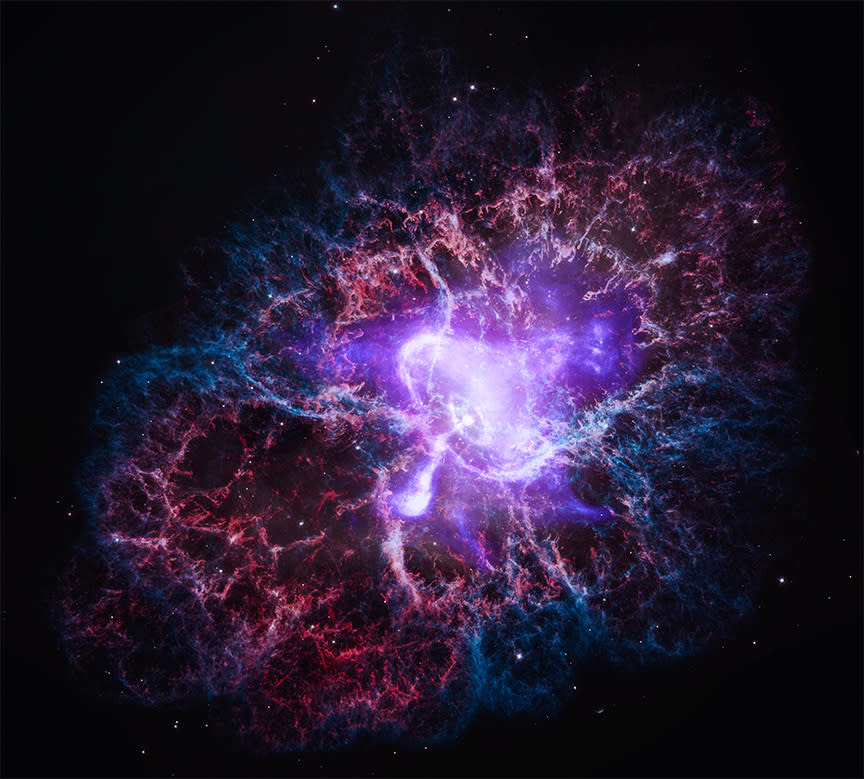
The Crab Nebula, one of the brightest supernova remnants in our sky, shines like a "neon purple mushroom" at the heart of a dense web of filaments spewed out by a massive star during its death. The new image from Chandra reveals in exquisite detail the rings around the white pulsar, a bright leftover of the bygone star, and narrow jets blasting away from it into the abyss of space.
You can browse through the remaining 20 images released as part of Chandra's 25th anniversary on the observatory's website.
